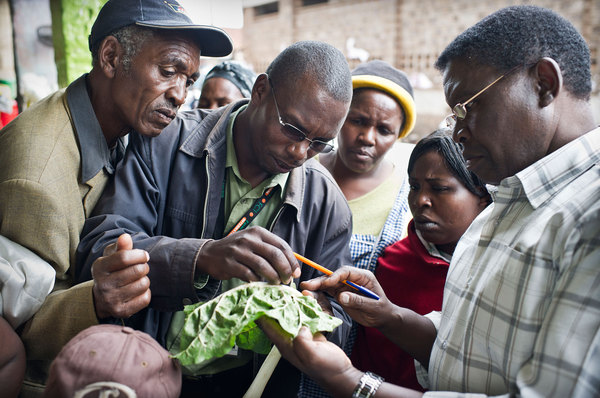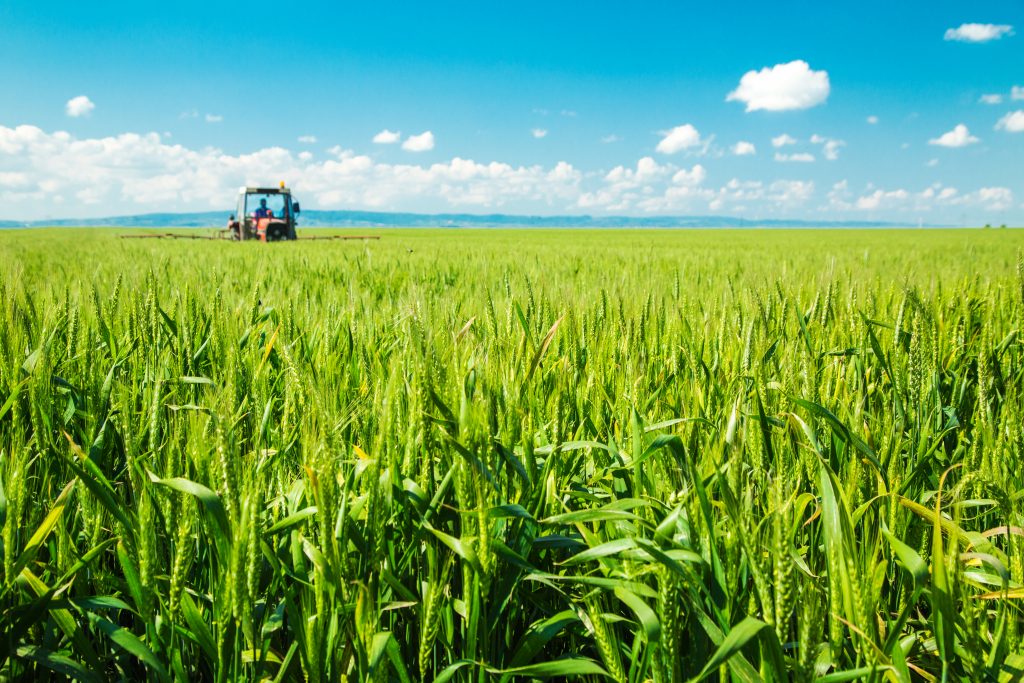Madagascan bananas may soon be extinct
Bananas we buy across the world could be threatened with extinction in the future. This claim is due to the decline of wild banana species which could be the last resort for saving the world’s most popular banana, the Cavendish.
Environmentally Friendly Insect Repellent for Agriculture
A team of researchers from the Technical University of Munich (TUM) have developed a biodegradable agent that repels insect pest activity amongst crops without the use of insecticide chemicals.
Does gender affect how farmers use rural advisory services?
In an article recently published in The Journal of Agricultural Education and Extension, CABI authors set out to discover more about gender differences in access to rural agricultural information. The research was undertaken in Pakistan and found major gender differences regarding use and preference of agricultural information in relation age and literacy.
Plantwise Plant Clinics provide advisory services to all farmers at Agri Expo in Pakistan
The Agriculture Department in Pakistan recently organised a two-day agriculture expo (23-24 June 2018) at the Expo center Lahore. The aim of the expo was to introduce recent interventions and advances in the agriculture sector to both farming and non-farming communities.
Rallying around plant health in Jamaica
The Rural Agricultural Development Authority (RADA), Research and Development Division (R&D) and Plant Quarantine Produce Inspection (PQPI) – all agencies of the Ministry of Industry, Commerce, Agriculture and Fisheries of Jamaica – teamed up with CABI Plantwise to prepare the first of a series of rallies on different plant health topics. A two-day workshop was…
New plant doctors trained in Pakistan
By Umair Safdar, CABI Pakistan Plant health is increasingly under threat from a range of abiotic factors – such as nutritional deficiencies, extremes in temperature, adverse soil pH, pollutants – as well as biotic factors such as fungi, bacteria, viruses, nematodes, insects and other animals. Diagnosing and managing these issues requires a new approach in…
Investing in smallholder farmers for a food-secure future
Smallholder farmers provide the vast majority of the world’s food supply, and ‘small-scale farming’ is the largest occupation group of economically active people, 43% of which are women. Approximately 2 billion of the world’s poorest live in households that depend on agriculture in some form for their livelihoods, whether this is for market or subsistence.…
Update: New Pest & Disease Records (08 June 18)
We’ve selected a few of the latest new geographic, host and species records for plant pests and diseases from CAB Abstracts. Records this fortnight include the first report of Melon necrotic spot virus in Brazil, the first report of chrysanthemum stem blight and dieback (caused by Tomato spotted wilt virus) in China and the first…
Making data digital in Pakistan
By Umair Safdar, Plantwise Pakistan Agriculture is increasingly knowledge-intensive with a continuing need to provide the right information to the people who need it most, making a real difference to their livelihoods. This ensures food security for the ever-growing population by providing the best possible remedies for crop health issues. Globally, rapid adoption of ICT…
The benefits of crop rotation for corn and soybean
Many farmers who grow soybean and corn also integrate crop rotation strategies to avoid the continuous corn yield cost, but scientists from the US have given a new reason to use crop rotation. Evidence suggests that rotating crops increases yield and lowers greenhouse gas emissions compared to monoculture corn or soybean.





